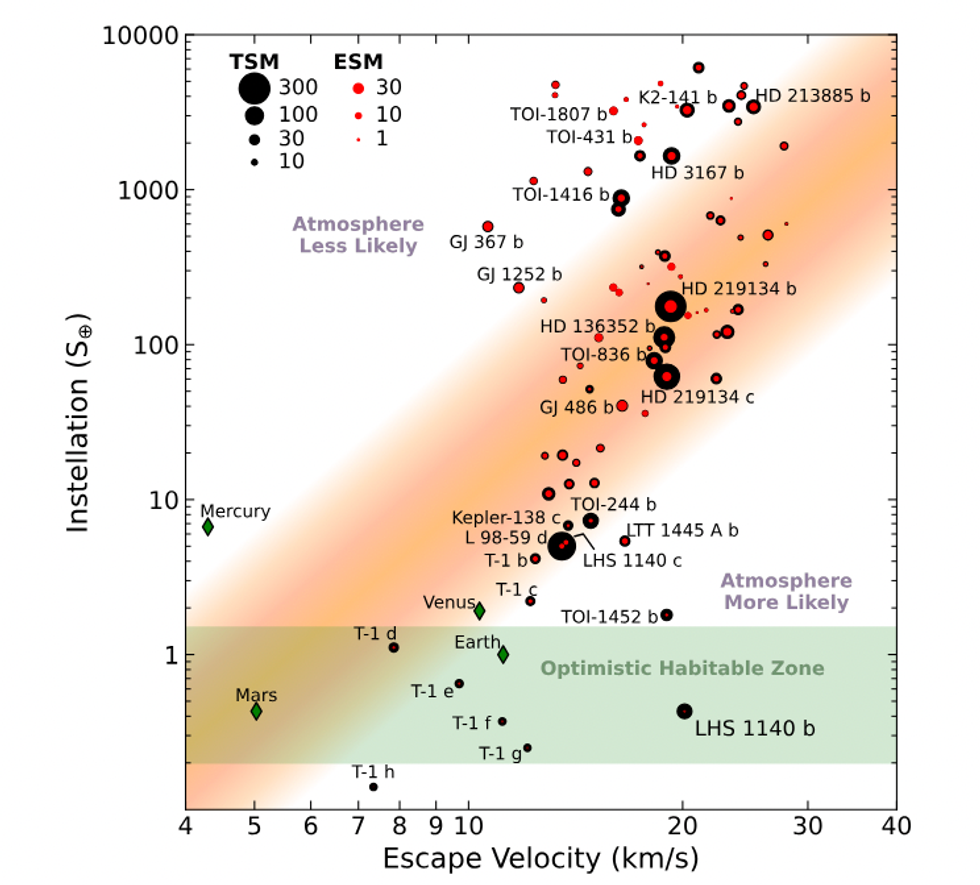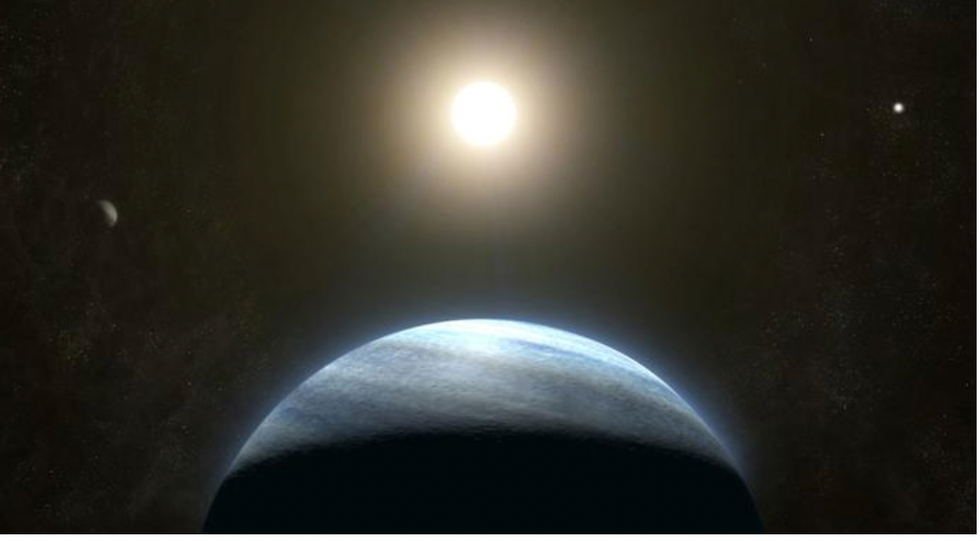Temperate exoplanet LHS 1140 b may be a world completely covered in ice
Benoit Gougeon, Université de Montréal
LHS 1140 b is 1.7 times the size of Earth and 5.6 times its mass
- NASA has discovered a potentially habitable exoplanet
- LHS 1140 b is located 48 light-years from Earth
- It is a 'major milestone' in the search for an 'alien world'
Don't Miss
Most Read
Trending on GB News
Stargazers have long looked up at the night sky and wondered whether life exists beyond our own.
Scientists may be one step closer to answering this fundamental question after discovering a promising "super-Earth" covered in ice or water.
When the exoplanet LHS 1140 b was first discovered, astronomers speculated that it might be a mini-Neptune: an essentially gaseous planet, but very small in size compared to Neptune.
Now a team of international scientists have come to a very different conclusion after analysing data from NASA's James Webb Space Telescope (JWST) collected in December 2023 - combined with previous data from other space telescopes such as Spitzer, Hubble and TESS.

LHS 1140 b's potential atmosphere and favourable conditions for liquid water make it potentially habitable
Charles Cadieux, et al.
What we know so far
Located some 48 light-years from Earth in the constellation Cetus, LHS 1140 b appears to be one of the most promising exoplanets in its star's habitable zone, potentially harbouring an atmosphere and even an ocean of liquid water.
The tantalising evidence suggests the exoplanet is a super-Earth that may even have a nitrogen-rich atmosphere. If this result is confirmed, LHS 1140 b would be the first temperate planet to show evidence of a secondary atmosphere, formed after the planet’s initial formation.
Estimates based on all accumulated data reveal that LHS 1140 b is less dense than expected for a rocky planet with an Earth-like composition, suggesting that 10 to 20 percent of its mass may be composed of water.
This discovery points to LHS 1140 b being a compelling water world, likely resembling a snowball or ice planet with a potential liquid ocean at the sub-stellar point, the area of the planet’s surface that would always be facing the system’s host star due to the planet’s expected synchronous rotation (much like the Earth’s Moon).
“Of all currently known temperate exoplanets, LHS 1140 b could well be our best bet to one day indirectly confirm liquid water on the surface of an alien world beyond our Solar System,” said Charles Cadieux, a Ph.D. student at UdeM's Trottier Institute for Research on Exoplanets and lead author of the new study.
“This would be a major milestone in the search for potentially habitable exoplanets.”
Is anyone out there?
While it is still only a tentative result, the presence of a nitrogen-rich atmosphere on LHS 1140 b would suggest the planet has retained a substantial atmosphere, creating conditions that might support liquid water. This discovery favors the water-world/snowball scenario as the most plausible.
Current models indicate that if LHS 1140 b has an Earth-like atmosphere, it would be a snowball planet with a vast "bull’s-eye" ocean measuring about 4,000 kilometers in diameter, equivalent to half the surface area of the Atlantic Ocean. The surface temperature at the centre of this alien ocean could even be a comfortable 20 degrees Celsius.
LHS 1140 b's potential atmosphere and favorable conditions for liquid water make it an exceptional candidate for future habitability studies.
This planet provides a unique opportunity to study a world that could support life, given its position in its star's habitable zone and the likelihood of its having an atmosphere that can retain heat and support a stable climate.
LATEST DEVELOPMENTS

TOI 4633 c was recently discovered in the habitable zone of an unusual star system
Ed Bell for the Simons FoundationNot open to tourism just yet
Confirming the presence and composition of LHS 1140 b's atmosphere and discerning between the snowball planet and bull’s-eye ocean planet scenarios require further observations.
The research team has emphasised the need for additional transit and eclipse measurements with the Webb Telescope, focusing on a specific signal that could unveil the presence of carbon dioxide. This feature is crucial for understanding the atmospheric composition and detecting potential greenhouse gases that could indicate habitable conditions on the exoplanet.
“Detecting an Earth-like atmosphere on a temperate planet is pushing Webb’s capabilities to its limits - it’s feasible; we just need lots of observing time,” said Doyon, who is also the principal investigator of the NIRISS instrument.
“The current hint of a nitrogen-rich atmosphere begs for confirmation with more data. We need at least one more year of observations to confirm that LHS 1140 b has an atmosphere, and likely two or three more to detect carbon dioxide.”
According to Doyon, the Webb Telescope will likely have to observe this system at every possible opportunity for several years to determine whether LHS 1140 b has habitable surface conditions.
Given LHS 1140 b's limited visibility with Webb — a maximum of only eight visits per year are possible — astronomers will require several years of observations to detect carbon dioxide and confirm the presence of liquid water on the planet's surface.








